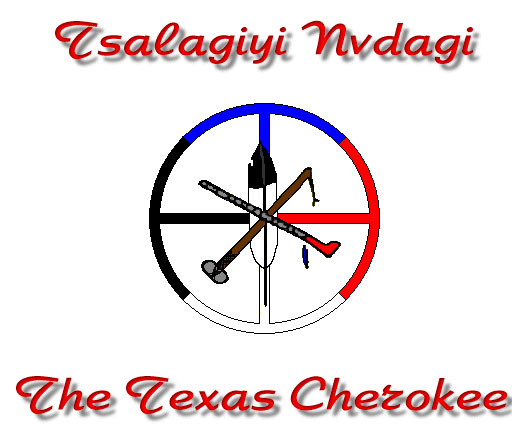In the 1600s, Europeans exploring the American southeast wrote of a purification ritual practiced by the native people, involving dancing, vomiting, and large amounts of what the travelers called black drink, in our own Tsalagi language it is known as Gvnega Advdatsi. Served from shell cups, the highly caffeinated tea was brewed from the shrub Ilex vomitoria, a species of holly. In a new study, researchers have found the first direct evidence of black drink — not in shells from Florida or Mississippi, but in ceramic beakers at the ancient city of Cahokia outside what’s now St. Louis, Missouri. The finding hints at a trade network that flourished centuries before Christopher Columbus landed in the New World, in which caffeinated drinks had Starbucks-like importance and possibly religious significance.
Cahokia sprang up almost overnight around 1050 C.E. and vanished almost as abruptly 300 years later. In the meantime, it was the largest and most sophisticated metropolis north of Mexico. According to archaeological evidence, the central part of the city covered about 14 square kilometers, making it larger than London was then. The 15,000 inhabitants built a wooden version of Stonehenge that charted eclipses; a stockade surrounding the city could be dismantled and rearranged according to an invader’s position. Excavation sites also yielded distinctively patterned, mug-shaped beakers.
Archaeologist Patricia Crown of the University of New Mexico, Albuquerque, and her colleagues were analyzing fragments of these beakers sent by Thomas Emerson and Timothy Pauketat, two archaeologists from the University of Illinois, Urbana-Champaign, who were working at Cahokia. The beakers contained residues presumed to be chocolate — a prized drink that made its way up from Central America. But although the chemical signatures showed traces of caffeine, they didn’t match up with those of cacao, chocolate’s main ingredient. The Cahokia team wondered whether the beakers had contained black drink instead. Since shell cups like those in the southeast had been found in Cahokia, some archaeologists suspected that traders might have brought the purifying brew to the city as well. But because holly leaves don’t survive to be found in archaeological digs, and analytical methods couldn’t distinguish among sources of caffeine, it wasn’t clear just what the Cahokians had been drinking.
To find out, Crown teamed up with biochemist and chocolate expert W. Jeffrey Hurst of the Hershey Foods Technical Center in Pennsylvania. Hurst had previously identified a chemical called theobromine that is found in chocolate. Research had also shown that holly plants contain a compound called ursolic acid, which isn’t found in chocolate.
In the new study, which appears online today in the Proceedings of the National Academy of Sciences, Crown and Hurst analyzed the Cahokian samples to look for each compound. They found that the holly-based drink had a characteristic ratio of caffeine to theobromine, plus the presence of ursolic acid, which distinguished it from cacao. Using this profile, they showed that the beakers of Cahokia had indeed contained black drink — 400 kilometers from the nearest Ilex vomitoria plant and 500 years before the Europeans described the brew in their journals.
Crown explains that because the bushes weren’t native to Cahokia but to the coastal region between eastern Texas and Florida, the leaves must have been brought to the inland city through trade routes connecting the two areas, which suggests the drink had huge cultural importance. Whether the Cahokians used black drink ritually isn’t known, but its appearance in fine-quality beakers suggests it was highly prized, if not sacred.
“We haven’t yet analyzed other types of pottery, so we can’t say that these beakers were for black drink exclusively,” Crown says. But the beakers were found at sites thought to be ritual gathering or burial places, and the distinctive handles, straight sides, and patterns are seen in pottery as far north as Wisconsin. If the beakers and black drink do go hand in hand, Crown and colleagues propose, it might signify wide-ranging Cahokian religious influence between the 11th and 13th centuries.
Paleoethnobotanist Gayle Fritz of Washington University in St. Louis says it’s exciting to have such an exact way of analyzing plant remains. “Usually it’s only charred remains of larger plant parts, such as corncobs, nuts, or seeds that show up in excavations.”
I would like to share this teaching with you all at this time:
Everyone has to find the right path. You can’t see it so it’s hard to find. No one can show you. Each person has to find the path by himself.
There are certain times in our lives when a voice whispers to us. The voice doesn’t always talk, usually we hear it best when we are sick and tired of being sick and tired. Inside every person is the knowledge that a Supreme Being exists. Sometimes a restlessness occurs and it makes you feel you need to be doing something or you need to be going somewhere or maybe you start wondering who you really are? Often when this happens we feel lost. Inside of everyone is the natural built-in desire to be walking the Red Road, or to be seeking a relationship with the Creator. No one can force us to make this journey. We must make this journey because we want to. This journey is not on the outside. The path is inside of ourselves. It is inside that we must begin our search.





